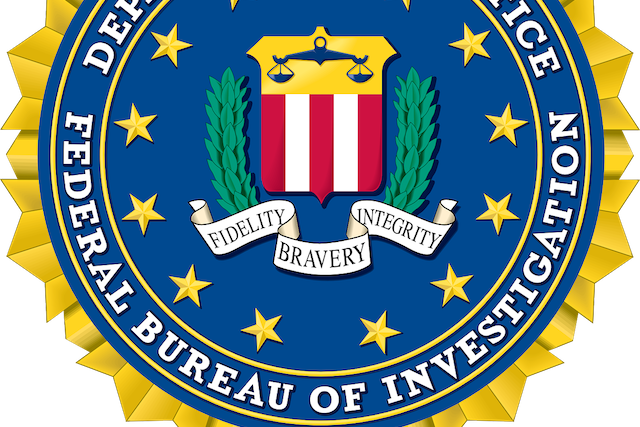An acronym is what you call a word form made from the initial letters of other words. NASA is the acronym we use for the National Aeronautics and Space Administration. BOGO means “buy one, get one.” These are pretty common in everyday life. But less common are backronyms — when you take an existing word and then use each letter as an initial for something else, essentially reverse engineering your acronym.
Sometimes it's done to be funny, and the military has a habit of doing it to make things sound cool and catchy. But they pop up in other places too, sometimes people just make them up because they think they should exist, even if they don't.
10. RPG is not a grenade launcher.

RPG is a term familiar to most gamers, as well as anyone interested in military history and weaponry. Take a look in Wikipedia , and it says that the grenade launcher is often called an RPG. And although people say that, it is not true that RPG stands for "rocket-propelled grenade." It was a backronym that we created in the English-speaking world for an existing term in Russian.
RPG comes from the Russian term " Hand-held anti-tank grenade launcher " Translated into English, this means " hand-held anti-tank grenade launcher ", which is essentially a rocket-propelled grenade, which is why the backronym is so rarely questioned. But it's like when you find out that a zipper isn't actually a common name for a thing, it's just a name that everyone uses because that's what they're used to hearing.
9. Wi-Fi means nothing

Once upon a time, if you were looking for a stereo system, you better believe you wanted one with Hi-Fi. Hi-Fi stands for “high fidelity,” and in music, it means your stereo system can reproduce sounds with crystal clarity. No distortion or loss of sound quality from your records, 8-tracks, or whatever else you were listening to. Music has evolved so much since the 1950s , when the term first appeared, that it is now difficult to even define what Hi-Fi means. But at least the definition is clear. Hi-Fi means high fidelity. So what does Wi-Fi mean?
Most people today will use wi-fi to mean “the internet,” or more specifically wireless internet. Businesses will have signs on the walls that say “free wi-fi,” or that wi-fi is for customers only. The term is actually a trademark of an organization called the Wi-Fi Alliance, so a product that uses the term wi-fi can’t technically be sold without their permission.
The term came into being in 1999 when the Wi-Fi Alliance wanted to use a term that sounded better than what Wi-Fi actually is, which is IEEE 802.11b Direct Sequence . They hired a consulting firm to come up with the name. It's two syllables, easy to remember, and vaguely technical. Something like Hi-Fi. But it's absolutely nothing Means . So while people have tried to apply a backronym to it, one of the most popular is "wireless fidelity" based on our Hi-Fi example, and even a few others like "wireless search" or even "invite friends from the internet", none of them are true.
8. Zbtb7 got the Pokemon Backronym, but not for long

You've probably never discussed Zbtb7 in casual conversation for a number of reasons. For one thing, it's a gene known to cause cancer, so it's not something most of us talk about at the best of times. It's a touchy subject, and also a highly technical one, since the names of the individual genes aren't something the general population knows. Another reason is that it went through several name changes before it got the jumble of letters and numbers it is today.
Back in the day, researchers at Memorial Sloan Kettering Cancer Center, the kind of people who need to discuss cancer genes by name, had a different name for it. They called it Pokemon. It was a backronym the team came up with because the gene's formal name was erythroid myeloid ontogenetic gene POK or the POKEMO genome. Close enough, right?
Pokemon is certainly easier to pronounce than the full name, and a little more user-friendly than Zbtb7. Unfortunately, the people who actually make Pokemon didn't see the bright side of naming a cancer-causing gene after their lighthearted cartoon. Pokemon USA threatened to sue, unless the name was changed, and it looks like cancer researchers weren't interested enough in the joke, so they changed it to the more down-to-earth name we have now.
7. The FBI came up with its motto as a backronym

The FBI, as an organization, is already an acronym, so it's odd that they now have a backronym as well. The organization originated back in 1908 and was then called the Bureau of Investigation. In 1932, it became the United States Bureau of Investigation, and shortly thereafter was officially renamed the Federal Bureau of Investigation.
Like many organizations, such as the CIA, NSA, or the U.S. Department of Defense, the FBI is mostly known by its initials, but the full name is easy enough to remember and recite when needed. But when they adopted an official name in 1935, they also adopted a motto, which was printed on their official seal: loyalty, courage, honesty ".
At the time, the Bureau of Investigation was already nearly 30 years old. Adopting a motto that was all good seems a little performative in retrospect, however, since it was shoehorned into their initials as a backronym after the name had already been established.
6. The Apgar score for newborns is a backronym

When babies are born, they are sometimes given what is called an Apgar test to assess their overall health at birth. This is usually done within the first five minutes. Apgar is an abbreviation , which stands for appearance, pulse, grimace, activity, breathing. Appearance has to do with skin tone, so the doctor wants to make sure the baby isn't turning blue, yellow, or any other color that isn't indicative of good health. Pulse is obvious and has to do with heart rate. Grimace has to do with proper reflex action, activity has to do with muscle tone, and breathing is, of course, breathing.
There is a scale that doctors can use to measure each of these elements, ranging from two to zero. Two is optional, one can indicate problems, and zero indicates something that definitely needs to be addressed. A zero on the appearance rating would mean the baby is turning blue. A zero on the pulse would mean there is no pulse at all.
So far everything looks fine, so where is the backronym used? The test was developed in 1952 by Dr. Virginia Apgar. She developed the backronym from her name to reflect the features that are important to look for in a newborn to assess its health, at least in terms of heart rate and breathing.
5. Jesus Fish - A Clever Early Backronym

Most of us have seen a Jesus fish before, usually attached to the back of a car, although they can be placed and used literally anywhere. For most of us, it’s a simple symbol that shows that the person using it considers themselves a Christian. If you’ve ever thought about it, you’ve probably at least associated the idea of a fish with Jesus in terms of the story of Jesus turning one fish into many. This all seems pretty reasonable in terms of biblical tales. But there’s more to it than meets the eye.
The Greek word for fish is ichthys, and early Christians turned it into an acrostic. An acrostic is like an acronym, in which the first letter of each line of something like a poem spells out a word. In this case, ichthys came to represent Jesus Christ Theou Jos Soter Translate this into English and you get Jesus Christ, the Son of God, the Savior.
The use of fish as a symbol of Jesus dates back to first century In earlier times, Christians were not always looked upon favorably, so presenting oneself as such to others was a risky business. Using the fish symbol allowed Christians to secretly recognize each other. The symbol was already used in other cultures and beliefs, so it would be viewed with less suspicion than other Christian symbols. Over time, the original abbreviation was dropped entirely, and the fish symbol became synonymous with Jesus as a kind of backronym.
4. International Event Log

TIME magazine was launched in 1923 and has long been one of the most influential and important news magazines in the world. Although magazines and media have changed significantly over the past century, Time's influence remains relevant. But even more questionable is the nature of the magazine's name.
It is said that TIME is an acronym, so the name is capitalized. The acronym in question is "International Event Journal". And yes, that fits, but there is no evidence that it is an acronym at all, and if it is to be adopted in any way, it must be a backronym.
There is no mention in TIME's archives of the magazine's name being an acronym. The earliest mention of the acronym dates back to 2007 . Even though TIME didn't even create it, they happily use it. backronym on your website.
3. NASA Named a Treadmill After Stephen Colbert

Sometimes the best reason to create a backronym is a joke, and that's what NASA did with the treadmill, of all things. Back in 2010, NASA held a contest to let the public name it room on the space station. They had four sentences that were very similar to NASA's words, but they allowed people to write their own ideas. The idea was picked up by Stephen Colbert, whose fans wrote his name enough to make Colbert the winner.
NASA took the matter in stride and said they weren't going to name the entire room after Stephen Colbert, but he would get a consolation prize. In place of the room is a piece of equipment now known as COLBERT, which stands for Combined treadmill with external resistance under working load. Astronauts need to exercise a lot in space due to the lack of gravity, so astronauts will now use the COLBERT treadmill to stay in shape.
2. SOS never meant anything

Perhaps the most famous acronym in the world, almost everyone has heard of SOS. It was developed in 1905 Germany After several years, countries recognized that ships in distress needed a common and effective method of signaling for help anywhere in the world that would overcome language barriers. SOS was developed for Morse code, and the reason these letters were chosen was for their simplicity and clarity. In the code, the letter "S" is represented by three dots in a row, which are made by quickly tapping the telegraph machine. "O" is represented by three dashes, which are longer taps.
At the time SOS was proposed, letters were not even considered. It was just dot, dot dot, dash, dash, dash, dot dot dot. It was easy to understand and unlikely to ever be confused with anything else.
Because when people hear it today and see it in print, they easily recognize that it is not a word. This has led to speculation about what it is supposed to mean, with “saving our ship” often cited as the answer. However, it is was never intended to have any meaning, so "save our ship" or "save our souls" or any other possible meanings are simply incorrect backronyms applied long after the fact.
1. The atmospheric phenomenon was named STEVE
Have you ever been far enough north to see the northern lights and see an arc of purple light piercing the atmosphere? If so, you've seen STEVE. STEVE stands for Strong Thermal Emission Velocity Enhancement and is the name given to the rare atmospheric phenomenon by photographer Chris Ratzlaff, who suggested it thanks to an animated film Over the Hedge .
STEVE had been photographed for decades, but no one knew what it was. It was suggested something called proton arc , but it didn't fit. STEVE fits the bill because in the film, the characters use the word to mean "something unknown." A backronym was developed, and it has stuck ever since.














Оставить Комментарий